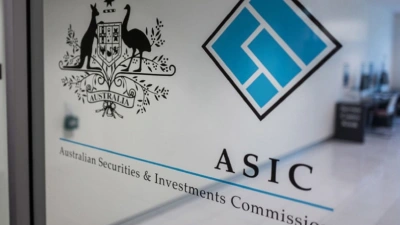AFSL: don’t wait till it’s too late
Many advisers have yet to tackle the new AFSL licence regulations. But by putting it off, they are losing precious time in a process that requires a steady and methodical approach if deadlines are to be met and compliance achieved effectively.
While theAustralian Securities and Investments Commission(ASIC) and industry associations continue to address various issues, prospective licensees should not allow the lack of finality to obscure the need to work systematically towards the March 2004 deadline. Their business future could depend on it.
The following systematic, step-by-step approach is designed to help practices of any size work their way towards efficient and effective licensing.
1. Formulate your AFSL strategy
In any great or even lesser enterprise, strategy should always come first.
This starts with such basic tasks as considering whether you require licensing at all and, if you do, whether you would be better off obtaining your own licence or aligning yourself with another licensee.
There should also be a review process in which you measure current activities and materials against the requirements of the new regulations.
Another early consideration is to note the cost of compliance, which, depending on business size and complexity, could range from $35,000 to $190,000 (see table). There will also be ongoing costs.
This initial stage is likely to force an examination of other strategic issues such as governance, resource management, capital adequacy, marketing and product distribution.
At this stage, you should appoint an appropriate person to drive the licensing process.
2. Consider impending businessactivities
Now that you have decided to take a logical approach to licensing, you need to make sure that you do not inadvertently trigger the transition to AFSL.
From March 2002, offering new products or starting new services may plunge you straight into the new regime. You therefore need to review your current activities and products and consider your position on those being planned.
3.Obtain professional advice
After reading the ASIC policies, if you decide you do not have the internal expertise, or if you feel you do not want to be too distracted from your core business activities, you should consider external legal, compliance, licensing and tax advice.
4. Identify key personnel
The AFSL application requires licensees to appoint appropriately competent and experienced people to manage and supervise your activities, so start by reviewing your key staff against the ASIC requirements.
5. Review your compliance andrisk management
Under an AFSL, effective compliance and risk management processes are essential for obtaining a licence and, beyond this, for continuing to meet your obligations as a licensee. You need to be able to demonstrate compliance with requirements relating to such matters as product research, training and supervision of competent representatives, fair and honest operations, effective management reporting and dispute resolution, adequate prudential obligations, documented procedures, effective business planning, integrated compliance assurance, and much more.
It’s a daunting list which, perhaps more than anything else, evidences the need to make an early start on planning and preparation. ASIC offers the view that prospective licensees should consider commissioning an external review of their operations, particularly if there have been compliance failures in the past.
6. Assess organisationalresources
Applying for an AFSL requires that you have adequate financial, technological and human resources to comply with your obligations under the law and the conditions of the licence.
In each case, you need to review existing resources to ensure their continuing adequacy and to obtain documentation that demonstrates compliance. You will also need to design and integrate processes to monitor compliance.
7.Address dispute resolution
If you provide services to retail clients, you are required to have internal and external dispute resolution systems and be able to prove membership to a recognised External Dispute Resolution (EDR) scheme that covers most or all of your activities.
8. Review compensationarrangements
You will need to have in place arrangements to compensate retail clients for any loss or damage attributable to you or your representatives.
A key element of this will be adequate professional indemnity insurance and, considering the current market conditions, you should allow sufficient time to obtain adequate cover and be prepared for significant premium increases.
9.Prepare regulated documents
The AFSL launches you into a new licensing and disclosure regime.
From the day your licence is granted, you’re obliged to make available a wide range of disclosure documentation.
So that’s it. AFSL represents a major change in business practice. It makes a number of onerous demands. But, looking on the bright side, it should build client confidence and also make your business more efficient and effective. The time to start is now.
Sean Graham is compliancemanager with Dealer BackOffice Services (DBOS), part ofthe Zurich Financial ServicesGroup. A more detailed paper isavailable atwww.dbos.com.au
Recommended for you
The corporate regulator has issued infringement notices to three AFSLs whose financial advisers provided personal advice to a retail client while unregistered.
Rather than taking a controlling approach, the latest generation of overseas private equity deals is helping advice firms to achieve their growth ambitions, three commentators have said.
Private wealth firm Fitzpatricks Group has appointed a newly created head of product, who previously spent 20 years at CFS, to bolster its range of investment options.
The Financial Services and Credit Panel has made a written direction after advice regarding non-concessional contributions meant an individual was forced to withdraw over $330,000 from their super.














